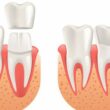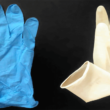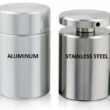Difference Between Glass And Crystal
Glass, a hard noncrystalline material that is usually clear and transparent. The glassy, or vitreous, state is one in which the atoms of the substance are arranged at random rather than in the regular patterns characteristic of crystals. This article deals with the chemical and physical properties of glass and the manufacture of glass products.
Although glass was first made about 4000 B.C., it was not until the 20th century that the original products and manufacturing processes were greatly changed. In 1900 glass was limited to use in windows, mirrors, containers, optical parts, and decorative objects. More than 50,000 different glass products are now manufactured.
The principal products made of glass are containers; windows; fiber products; food service ware; industrial products, including laboratory apparatus and processing equipment; electronic components, such as tube enclosures and resistors; architectural panels; and lighting fixtures.
Crystal, any bit of solid matter whose atoms are arranged in a repetitive order. Investigations have shown that in almost all solid substances the atoms are arranged in repetitive order and hence form crystals. Glass and plastic are the principal exceptions, and even in these substances a repetitive order is found in patches or within small areas.
Crystalline materials vary widely, from metals, gems, and salts to particles of dust. However, the atoms of each are arranged in an orderly fashion. The detailed nature of the crystalline order—that is, the crystal structure—is different in each, being characteristic of the substance forming the crystal.
Crystallography has been of major importance as a tool in the development of other modern sciences, particularly physical chemistry, physics, and biochemistry. One important example of the use of crystallography was its primary role in determining the structure of DNA, the hereditary material of every cell. In chemical studies, examination of crystal structures has become an analytical tool and also a means for studying the nature of the bonding between atoms and of the atomic configurations in complicated molecules. In physical studies, a knowledge of the crystal structure of a solid is usually essential to any atomistic explanation of its physical properties.



